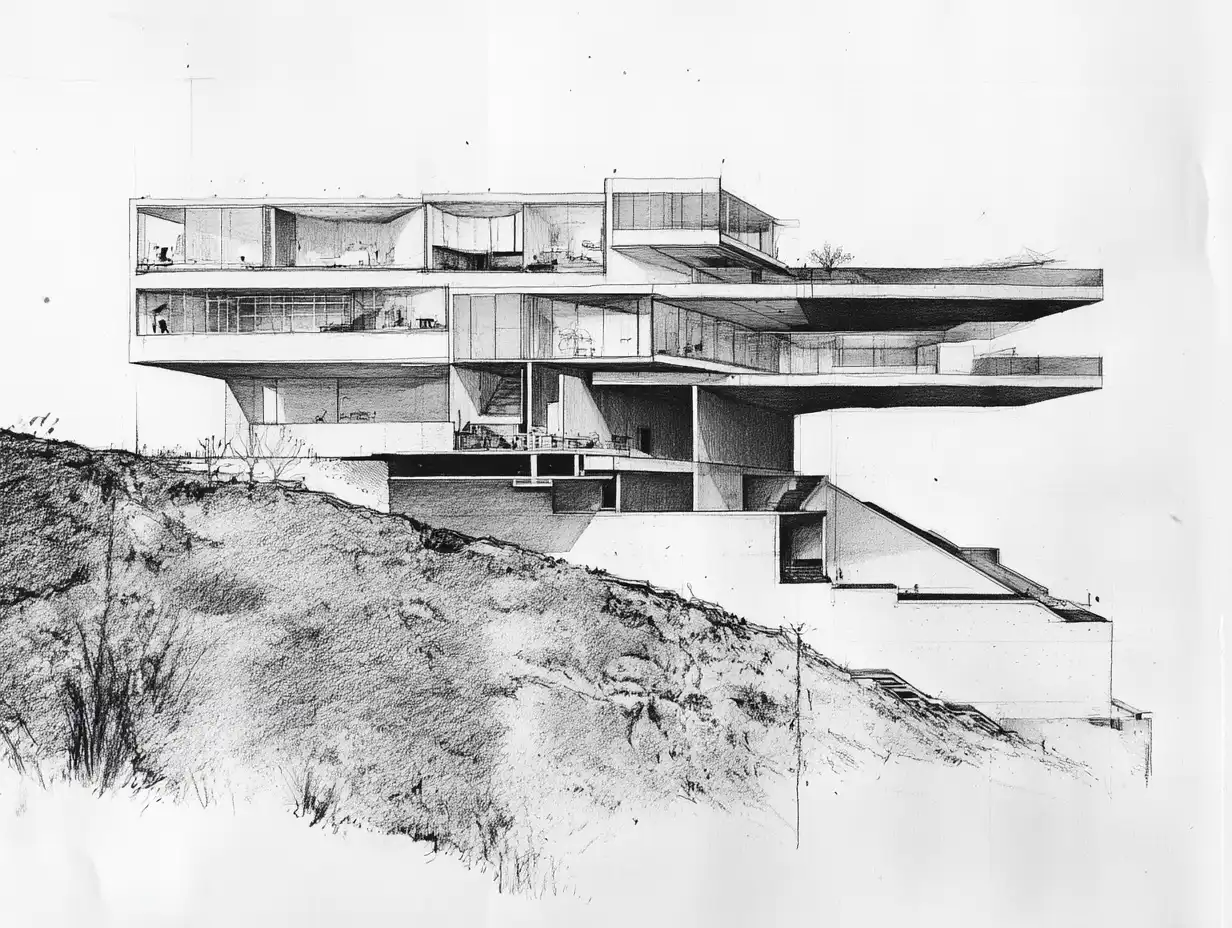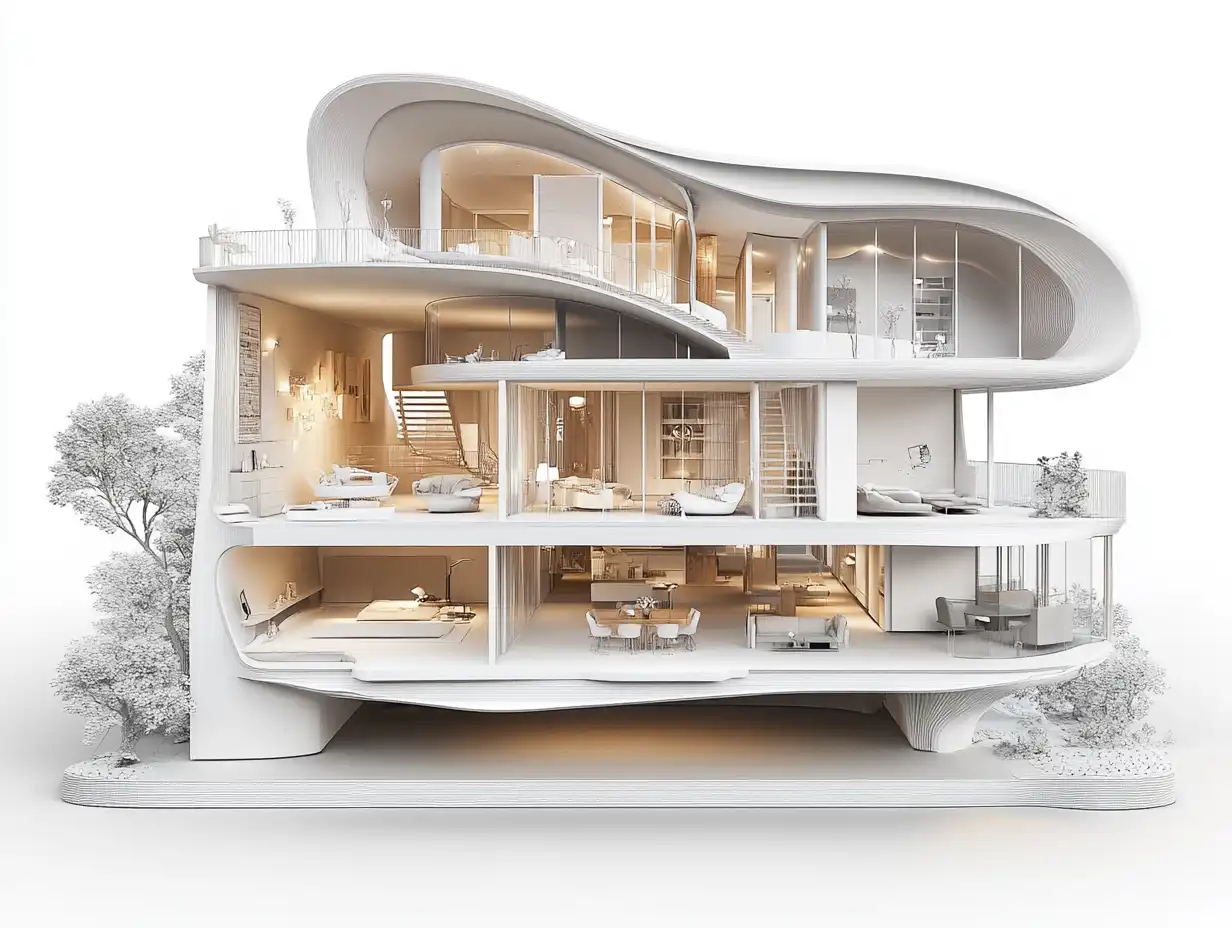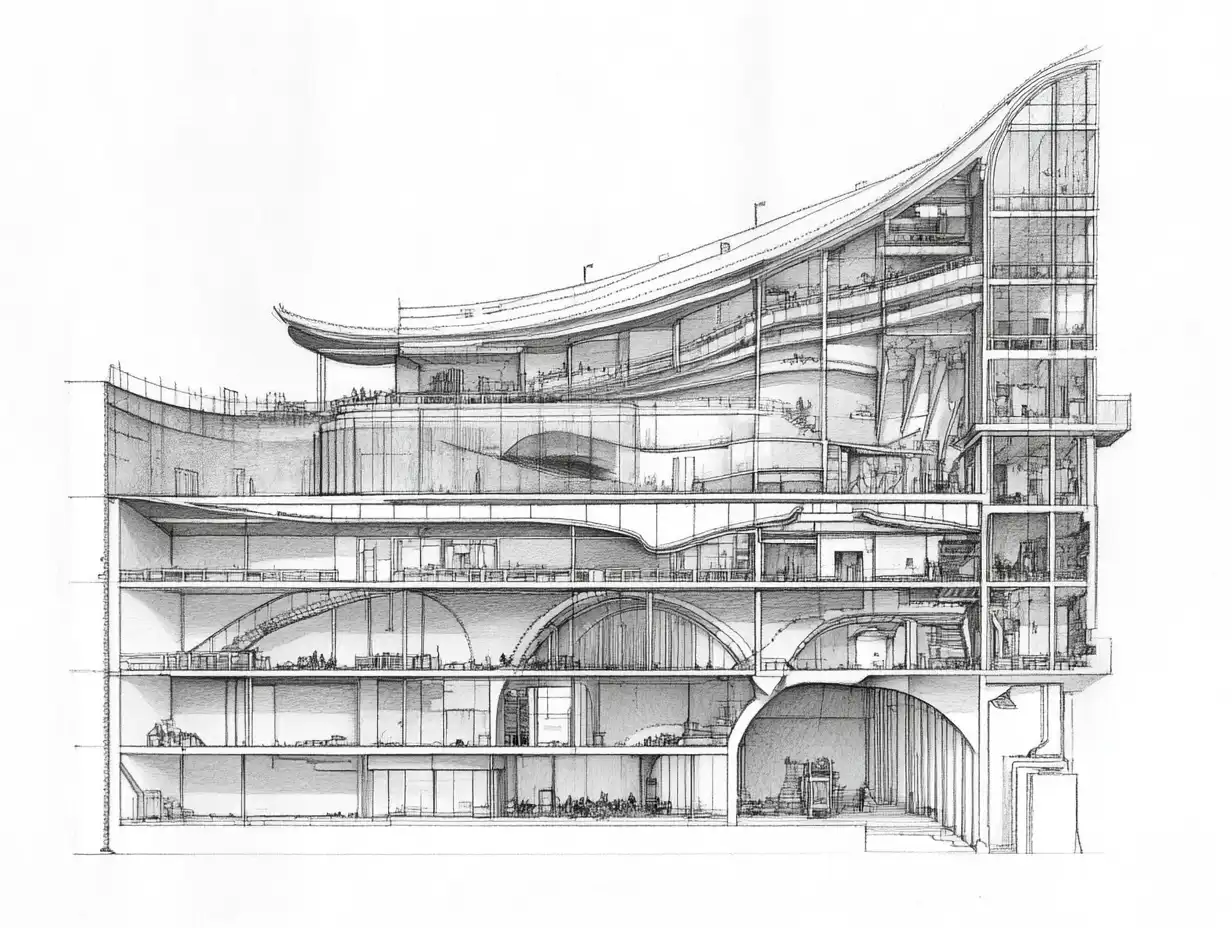Section drawings are essential tools in architecture and engineering, offering a clear glimpse into a building’s inner workings. By slicing through structures, these drawings reveal critical details that floor plans often miss. Understanding these visual representations can significantly enhance our comprehension of design and construction processes.
As we dive into the world of section drawings, we’ll explore their purpose, the different types, and how they communicate complex information effectively. Whether you’re a student, a professional, or simply curious about architectural design, grasping the nuances of section drawings can deepen our appreciation for the art and science behind every structure we encounter. Join us as we unravel the layers of this fundamental aspect of visual communication.

Importance Of Understanding Section Drawings
Understanding section drawings is crucial for several reasons.

- Visual Clarity: Section drawings provide a clear view of architectural elements not visible in floor plans. They illustrate vertical relationships between spaces, helping us comprehend the overall design better.
- Construction Insights: These drawings detail the construction processes, including materials and structural elements. They reveal how different components interact, guiding us in effective planning and execution.
- Design Evaluation: Section drawings allow us to evaluate design aesthetics and functionality. They highlight proportions and scale, enabling a thorough assessment of the spatial experience within a building.
- Technical Communication: Engineers and architects use section drawings to communicate complex ideas visually. This clarity fosters collaboration among professionals, reducing misinterpretations during project development.
- Educational Tool: For students and new professionals, section drawings serve as educational resources. They promote a deeper understanding of architectural concepts and construction principles.
- Regulatory Compliance: Section drawings assist in ensuring compliance with building codes and regulations. They provide necessary information for permits and approvals, facilitating the project approval process.
Through our exploration of section drawings, we appreciate their significance in the fields of architecture and engineering, enhancing our ability to interpret, communicate, and execute design concepts effectively.
Types Of Section Drawings
We can categorize section drawings into three main types, each serving a specific purpose in architectural and engineering design. These drawings help convey varying levels of detail and context.

Full Section Drawings
Full section drawings depict a complete cut through an object or structure. These drawings illustrate every detail across the entire width or depth. Architects use full sections to highlight intricate elements, including walls, windows, and doorways, allowing for comprehensive examination of materials and construction techniques. They provide a robust understanding of spatial relationships and structural components, benefiting design evaluation and client presentations.
Half Section Drawings
Half section drawings feature a cut through only part of a structure, revealing a cross-section of one-half while the other half remains as an external view. This approach offers a clear perspective of an interior layout while maintaining spatial context. Half sections are particularly useful for showcasing furniture placement, room dimensions, and relationships between spaces. They efficiently communicate essential design elements without overwhelming the viewer with excessive detail.
Offset Section Drawings
Offset section drawings include multiple cutting planes that shift from a straight line to showcase distinct features within a single view. This type captures the intricacies of various sections, such as different levels or modifications, in one drawing. Offset sections are ideal for complex designs where conventional sectioning might not effectively convey the relationships between different areas. They enhance our understanding of multi-level structures and are pivotal for technical documentation and presentations.
Techniques For Reading Section Drawings
Understanding techniques for reading section drawings enhances our ability to interpret architectural designs. These techniques provide essential insights into the structural and aesthetic elements of a project.

Visualizing The 3D Structure
Visualizing the 3D structure from section drawings creates a clearer understanding of spatial relationships. Section drawings present vertical and horizontal planes, enabling us to see how different levels connect. We can break down complex designs by following imaginary axes and perspectives. This technique helps us perceive aspects such as ceiling heights, material layers, and structural systems.
Identifying Key Features
Identifying key features within section drawings ensures we grasp critical components of the design. We focus on elements such as walls, windows, doors, and materials. Recognizing symbols and notations improves our interpretation. Understanding the thickness of walls indicates insulation or structural requirements, while window placement highlights natural light and ventilation considerations. Each detail aids in visualizing the overall configuration and function of spaces within a structure.
Common Mistakes In Interpreting Section Drawings
We often encounter several common mistakes when interpreting section drawings. Recognizing these errors enhances our understanding and accuracy in utilizing these crucial representations.

- Neglecting Scale
Neglecting scale leads to misinterpretations of size and proportion. Section drawings typically use specific scale ratios, which dictate the relationship between the drawing and the actual dimensions. Failing to consider these scales can distort our perception of the design.
- Ignoring Details
Ignoring details such as material specifications, thicknesses, and finishes can result in incomplete understanding. Important information embedded in section drawings includes wall assemblies, insulation, and finishes, significantly impacting our comprehension of the design.
- Assuming Uniformity
Assuming uniformity assumes all elements within a section appear identical. Differences in dimensions, materials, and construction methods often exist. Recognizing these variations is crucial for accurate interpretation.
- Overlooking Context
Overlooking context may lead to misunderstanding a structure’s relationship with its environment. We must consider adjacent spaces and external elements, as they provide context and impact design decisions.
- Disregarding Orientation
Disregarding orientation, especially regarding north and east, might result in confusion about light and spatial dynamics. Orientation influences natural light flow, views, and overall comfort in spaces.
- Misinterpreting Symbols
Misinterpreting symbols affects our ability to decode essential elements. Each symbol in a section drawing carries specific meanings, including structural components and materials. Familiarity with these symbols is vital for accurate interpretation.
- Failing to Visualize 3D Relationships
Failing to visualize 3D relationships can limit our understanding of how spaces interact. It’s essential to mentally reconstruct the three-dimensional aspects implied by the section drawing to grasp the design’s full impact.
By avoiding these common pitfalls, we improve our interpretation skills and strengthen our understanding of architectural designs. Recognizing these errors promotes better communication among professionals and enhances our overall appreciation of section drawings.
Tools And Software For Creating Section Drawings
We utilize various tools and software to create effective section drawings, enhancing our design representation and communication. Here are some notable options:

- AutoCAD: This widely used software allows for precise drafting and detailing, offering tools for 2D and 3D modeling. It provides features like layer management, which helps us organize section drawings effectively.
- Revit: As a building information modeling (BIM) software, Revit enables us to create comprehensive 3D models that automatically generate section drawings. Its ability to integrate architectural, structural, and MEP components enhances our collaborative efforts.
- SketchUp: Known for its user-friendly interface, SketchUp simplifies the process of creating 3D models. We often use plugins that allow us to produce section drawings quickly, aiding in visual presentations.
- Archicad: This BIM software supports parametric design, enabling us to produce accurate section drawings that reflect real-world conditions. Its collaborative features facilitate teamwork among professionals.
- Vectorworks: This design software combines 2D and 3D capabilities, allowing us to create detailed section drawings and manage project data efficiently. It supports custom design workflows to fit our specific needs.
- Rhino: With its powerful modeling tools, Rhino helps us create complex geometries. We use additional plugins, such as Grasshopper, to automate the generation of section drawings based on parametric designs.
- Adobe Illustrator: For final presentations, we often use Illustrator to refine section drawings. This software allows us to enhance visual elements, add annotations, and ensure clarity for client communications.
These tools and software streamline our process of creating section drawings, thereby improving the effectiveness of our architectural and engineering designs. Using the right combination empowers us to represent complex information clearly, facilitating better understanding among stakeholders.
Conclusion
Understanding section drawings enhances our interpretation of architectural designs and engineering concepts. These two-dimensional representations offer essential insights into spatial relationships and construction processes, which are often overlooked in traditional floor plans. By grasping the purpose and types of section drawings, we unlock clearer communication among professionals and foster greater appreciation for design intricacies.
Effective techniques for reading section drawings empower us to visualize three-dimensional structures, making it easier to identify essential elements such as walls, windows, and materials. Avoiding common mistakes ensures that our interpretations remain accurate and informed. Furthermore, utilizing advanced tools and software in creating section drawings significantly elevates our design representation, ultimately improving stakeholder communication.
In the realm of architecture and engineering, section drawings serve as invaluable assets in conveying complex information clearly and effectively. They contribute to our ability to execute design concepts with precision, ensuring that every detail aligns with the overall vision. As we continue to explore section drawings, our mastery of these representations elevates our understanding of the built environment.
- architectural detailing
- architectural drawing insights
- architectural insights
- architectural section drawings
- architectural section examples
- architecture design clarity
- architecture design principles
- architecture drawing types
- clear architectural designs
- design clarity guide
- design clarity in architecture
- fundamentals of section drawings
- how to read section drawings
- importance of section drawings
- improving design understanding
- interpreting section drawings
- section drawing guide
- section drawing techniques
- section drawing tutorial
- section drawings for architects
- understanding section drawings
















Leave a comment